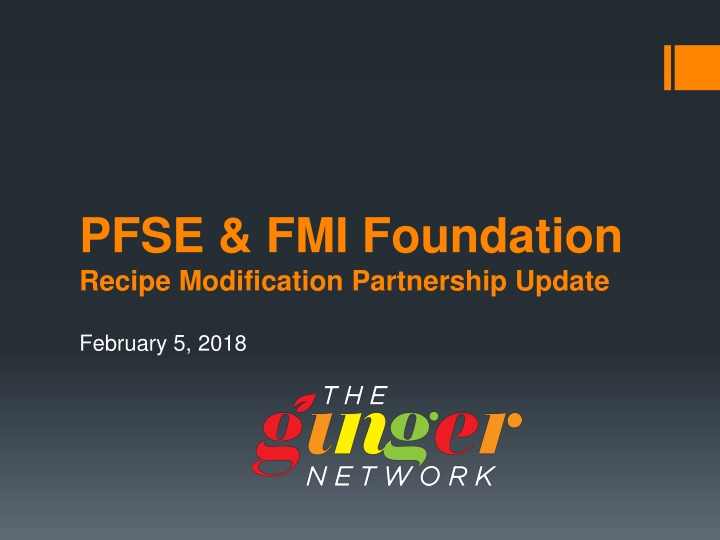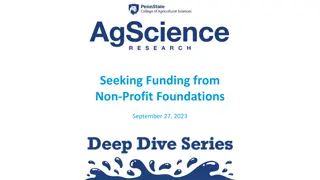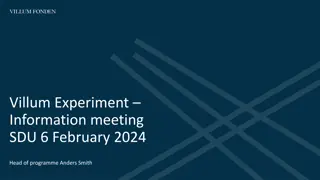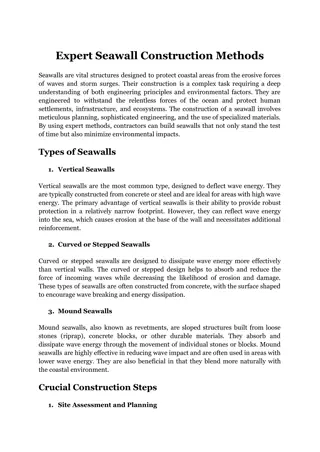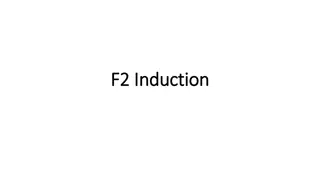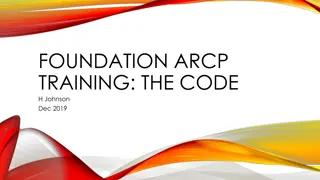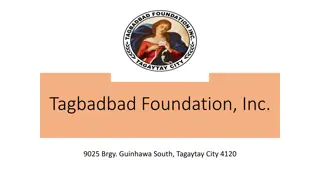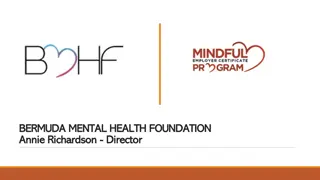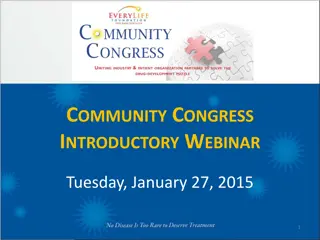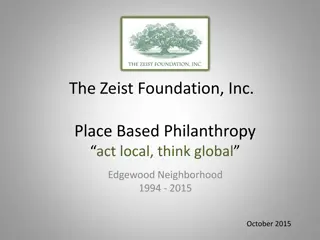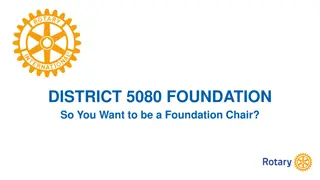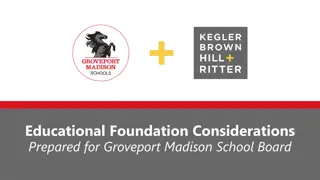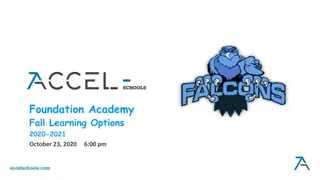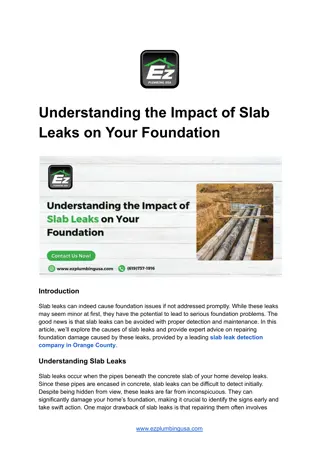PFSE & FMI Foundation
The PFSE & FMI Foundation partnership update reveals initiatives to enhance food safety practices through recipe modification. PFSE focuses on reducing foodborne illness risks, while FMI Foundation promotes quality in the food retailing system. New research emphasizes the effectiveness of incorporating food safety instructions into recipes. Opportunities lie in merging food safety with the family meals initiative to reach wider audiences.
Download Presentation

Please find below an Image/Link to download the presentation.
The content on the website is provided AS IS for your information and personal use only. It may not be sold, licensed, or shared on other websites without obtaining consent from the author.If you encounter any issues during the download, it is possible that the publisher has removed the file from their server.
You are allowed to download the files provided on this website for personal or commercial use, subject to the condition that they are used lawfully. All files are the property of their respective owners.
The content on the website is provided AS IS for your information and personal use only. It may not be sold, licensed, or shared on other websites without obtaining consent from the author.
E N D
Presentation Transcript
PFSE & FMI Foundation Recipe Modification Partnership Update February 5, 2018
Situation Analysis - PFSE Founded in 1997, The Partnership for Food Safety Education (PFSE) has been delivering trusted, science-based behavioral health messaging and a network of resources that support consumers in their efforts to reduce risk of foodborne illness. PFSE has worked with an active network of 13,000 health and food safety educators known as BAC Fighters! and has supported them by making their work more visible, collaborative, and effective. PFSE is funded by contributions, grants, and in-kind support for special projects provided by corporations, government agencies, independent foundations, and other non-profit organizations. The PFSE Board is highly interested in exploring revenue- generating activities to sustain and grow the organization. The Partnership celebrated its 20thAnniversary in September 2017 during National Food Safety Month.
Situation Analysis - FMI Foundation Established in 1996, the Food Marketing Institute Foundation seeks to ensure continued quality and efficiency in the food retailing system and is operated for charitable, educational and scientific purposes. To help support the role of food retailing, the FMI Foundation focuses on research and education in the areas of food safety, nutrition and health. The Foundation has been a long-term supporter of PFSE. Three years ago, FMI Foundation also created and launched National Family Meals Month (NFMM) to rally the retail food industry and other partners around a family meals movement. The goal of the Family Meals campaign is to encourage one more meal at home each week.
Situation Analysis New Research In 2016, the Journal of Food Protection published a study titled, Recipe Modification Improves Food Safety Practices during Cooking of Poultry. The study recognized that in spite of numerous approaches to improve food safety among consumers, a deficit remains in the actual practice of safe behaviors. The study examined whether the introduction of food safety instructions written into recipes would improve food safety behaviors during food prep. The conclusion was that participants who received recipes with food safety instructions demonstrated significantly improved food safety behaviors (e.g., handwashing and thermometer use) compared to those who did not have food safety instructions written into the recipe. In addition, the majority of participants stated that they thought the instructions were easy to use and that they would be likely to use similar recipes at home.
Opportunities The FMI Foundation is motivated to begin weaving food safety into the family meals initiative. Rationale: It is aligned with the Foundation s mission to promote food safety, nutrition and health. The family meals initiative has multiple tools and touchpoints where food safety can be integrated. The family meals initiative is growing at warp speed and is being embraced by consumers, media, retailers and suppliers. It offers PFSE a highly visible platform for food safety messaging. FMI Foundation provided seed money in Q4 2017 to jumpstart an initiative that blends the family meals and food safety efforts.
Objectives Create a new standard for how all food recipes should be written to include food safety instructions. Educate recipe developers and publishers why it is necessary to adopt the new standard.
Rationale Since its initial publication in 1953, the AP Stylebook has been a must-have reference for writers, editors, students and professionals. It provides fundamental guidelines for spelling, language, punctuation, usage and journalistic style. It is the definitive resource for journalists. In 2001, this Stylebook added a 16-page food section that includes an official AP Recipe Style. This format has been adopted by the Association of Food Journalists and is followed by most media. We recommend that, based on the results of the recipe modification study, PFSE propose a new standard recipe style showing how food safety instructions should be added.
Recipe Landscape Rationale Tennessee State University s Sandria Godwin PhD., RD and her team have conducted numerous studies investigating current food safety related information in poultry and egg recipes. Results: Except for cookbook created by Godwin and team (http://www.fightc- les.org/tasty%20and%20safe/tasty%20and%20safe.html) only 23% of recipes even mention temperature. Otherwise, NO recipes included food safety steps within the recipe itself. Moreover, most with temperature instructions were incorrect!
Challenge & Additional Rationale Other organizations have advanced the concept or have been discussing the concept of recipe modification with food safety instructions. To date, these other organizations have not promoted the concept broadly. It is most logical that PFSE with its active network of 13,000 health and food safety educators including 26 partner organizations and Federal liaisons - own and advance this trusted, consistent, science-based behavioral health messaging.
Process The Ginger Network has proposed a 10-Stage Process to advance this new recipe standard project. In Q4 2017, The Food Marketing Institute Foundation has provided funding for the first three stages.
Process Stage Stage 1 Description Identification of research gaps to be filled to provide scientific justification for a comprehensive set of food safety instruction standards for consumer recipes. Gaps identified by Sandria Godwin, PhD, RD, author of original study. Stage 2 Development of a proposed new standard for how all food recipes should be written to include food safety instructions: Supported by the existing study published in the Journal of Food Protection that demonstrates how recipe modification improves food safety practices. Also supported by proposed research gaps to be filled. Stage 3 Vetting of this new proposed standard with PFSE board members and/or review committee for input before conducting final gap-filling research. Review committee support will be provided by Sandria Godwin. Stage 4 Conducting additional research to fill the gaps (if needed) to add/refine food safety instructions within the new recipe-writing standard. Stage 5 Final review of revised standard (incorporating findings of additional research) followed by appropriate editing to finalize new proposed standard.
Process Stage Stage 6 Description Vet final proposed standard with two or three key food editors/recipe developers for feedback before launching. Stage 7 Launch - Proposals to relevant, credible organizations like the Association of Food Journalists and the AP Stylebook to introduce the rationale and recommendations to adopt this new standard. Stage 8 Media briefings with food editors and food writers at national magazines to introduce the new standard, followed by broader outreach to food editors and food bloggers. Stage 9 Presentations at key conferences of food and recipe influencers (IACP, Les Dames d Escoffier, Oxford Food Writers Symposium, FNCE, BlogHer, next Consumer Food Safety Education Conference, etc.) to introduce the new standard. Stage 10 Establishment of a small team of recipe editors who will provide initial re-writing services to modify existing recipes to the new standard. This team will be available to PFSE and FMI members and others to modify recipes for a minimal cost. This service is intended to become a revenue generator for PFSE.
Stage #1 Update Gap Analysis
Gap Analysis - Purpose The purpose of the gap analysis is for PFSE and FMI Foundation to look critically at the justification of this new recipe standard and to address the anticipated challenging questions from food editors and culinary media, specifically: Does PFSE have sufficient data to call for an overhaul of the current recipe standard and the related investment of time, energy and expenses? Why should we do this? The following slides look at specific challenges and responses to address research gaps.
Gap Analysis Body of Evidence Challenge How can PFSE call for an overhaul of the current recipe standard and the related investment of time, energy and expenses based on the results of one simple study? Response There are three complementary studies** that demonstrate the importance of food safety instructions in recipes: 1. Testing Recipes WITH instructions. 2. Testing meal prep WITHOUT recipes at all. 3. Testing recipes WITH and WITHOUT instructions. **(See next slide for citations) Conclusion There is sufficient body of evidence to support the need for a new recipe standard that incorporates food safety instructions.
Gap Analysis Body of Evidence Studies to Date Study with Food Safety Instructions AN INNOVATIVE APPROACH FOR INTEGRATING HEALTH CARE PROVIDERS INTO FOODBORNE ILLNESS PREVENTION FOR OLDER ADULTS. Not published but on USDA website: https://reeis.usda.gov/web/crisprojectpages/0219424-an-innovative-approach-for- integrating-health-care-providers-into-food-borne-illness-prevention-for-older- adults.html Related cookbook can be found at: http://www.fightc- les.org/tasty%20and%20safe/tasty%20and%20safe.html Study without Recipes at All CURTIS MAUGHAN, EDGAR CHAMBERS IV, SANDRIA GODWIN, DELORES CHAMBERS, SHERYL CATES, and KADRI KOPPEL (2016) Food Handling Behaviors Observed in Consumers When Cooking Poultry and Eggs. Journal of Food Protection: June 2016, Vol. 79, No. 6, pp. 970-977. http://jfoodprotection.org/doi/abs/10.4315/0362-028X.JFP-15-311?code=fopr-site Study with and without Food Safety Instructions CURTIS MAUGHAN, SANDRIA GODWIN, DELORES CHAMBERS, and EDGAR CHAMBERS IV (2016) Recipe Modification Improves Food Safety Practices during Cooking of Poultry. Journal of Food Protection: August 2016, Vol. 79, No. 8, pp. 1436-1439. http://jfoodprotection.org/doi/abs/10.4315/0362-028X.JFP-15-468
Gap Analysis Body of Evidence Challenge Can PFSE replicate the results in the recent Journal of Food Protection study to justify the adoption of a new recipe standard? Response There are three complementary studies** that demonstrate the importance of food safety instructions in recipes: 1. Testing Recipes WITH instructions. 2. Testing meal prep WITHOUT recipes at all. 3. Testing recipes WITH and WITHOUT instructions. **(See previous slide for citations) Conclusion There already is sufficient body of evidence to support the need for a new recipe standard that incorporates food safety instructions.
Gap Analysis Scope of Food Safety Practices Challenge How can PFSE recommend a comprehensive set of recipe safety practices when the Journal of Food Protection study only evaluated two of the four PFSE safety practices (cook and clean)? Response Dr. Godwin reports that that the JFP study did cover all four practices clean, cook, chill, separate. We have the data even if it wasn t included in the published article. Conclusion We do not need another study to address all four practices, we can mine the unreported data from the existing study.
Gap Analysis Scope of Food Safety Practices Challenge Isn t it a weakness that the clean practices tested in the Journal of Food Protection study only evaluated hand washing and not surface cleaning? Response It is true that the clean practices tested in the Journal of Food Protection study only evaluated hand washing and not surface cleaning. Conclusion It is not a bad idea to recommend surface cleaning in recipes, but the lack of testing it in this study does not in any way invalidate the recommendation to incorporate all other food safety steps in recipes.
Gap Analysis Behavior Outside of Study Challenge How do we know that subjects will continue the food safety behaviors if they are not being watched outside of the study scenario? Response While it is human nature to be on better/best behavior when being observed knowingly, many test subjects made significant food safety mistakes without instructions. It is illegal to video tape consumers without their permission, so it is almost impossible to study this. Positive verbatim comments from test subjects indicate receptiveness to food safety instructions and related behavior. Conclusion While we cannot prove that consumers will follow food safety instructions without being watched, we have enough evidence to believe that they would.
Gap Analysis Impact on Illness Challenge How do we know that these recipe modifications will reduce food-borne illnesses? Response We do not know that these modifications will impact food-borne illnesses. We do know that these practices improve food safety behaviors. Conclusion It is a logical assumption that the reduction of risky behaviors will improve the incidence of food safety illness. Lack of proof in the reduction of food-borne illness should not prevent these recipe modifications from being advanced.
Gap Analysis Conclusions PFSE has sufficient data TODAY to call for an overhaul of the current recipe standard. The power of the three groups of studies identified above and their methodology are more than sufficient to justify using this new system. In fact, there may be more scientific support for this recommendation than for other government dietary guidance. Even if it is always desirable to have more robust research, there is no need to delay the recipe modification process with additional studies. The public health need to improve consumers food safety practices justifies/demands more tangible, achievable actions consumers can implement to protect their health.
Stage #2 Update Preliminary Thoughts on New Recipe Standard
Recipe Considerations We recognized that one set of food safety instructions will not be suitable for all types of recipes. Therefore, we recommend three categories of recipe standards: 1. Appetizers 2. Entrees 3. Desserts We also recognized that it will become overwhelming very quickly if we include a food safety message in every step of every recipe. Therefore, we will identify the risky behaviors that occur most frequently within each category.
Recipe Considerations Infractions for all recipes: 1. Research to date shows that temperature is the #1 infraction across the board. 2. The #2 infraction is not washing hands.
Imperatives This new standard must focus on the most critical/dangerous infractions and related within each recipe category. At the same time, we must strike a balance so that the food safety instructions do not overburden the user or make the recipes too long. Feedback in some of the recent studies indicated that users felt that some of the instructions were repetitive and perhaps even insulting in their repetitiveness.
Recipe Instruction Recommendations Appetizers Pre-preparation Wash food preparation surfaces with warm soapy water. Preparing ingredients [For soft produce] Hold the [ ] under cold running water while rubbing gently with your finger tips. Use a paper towel to dry. [For firm produce] Scrub the [ ] with a vegetable brush while holding under cold running water. Washing hands when most important Wash your hands with soap and warm water for 20 secs. before you begin this recipe. Wash your hands with soap and warm water for 20 secs. after handling the [___________].
Recipe Instruction Recommendations Appetizers Using cutting boards and utensils Use two separate cutting boards during preparation, one for raw meats [e.g., chicken] and the other for vegetables, herbs and spices. Wash the cutting board and knife, if used, with soap and water or use a new cutting board and knife for later steps. Cooking using thermometer and temperature Insert the cooking thermometer into the center [or other appropriate location]. Bake until the internal temperature reaches a minimum of [160 F]. Wash thermometer with hot soapy water after each temperature reading. Keeping safe after prep: Hot foods Keep hot food hot after cooking (at 140 F or above), by using a heat source such as an oven, chafing dish or warming tray. Keeping safe after prep: Cold foods Keep cold foods cold after preparing by placing in the refrigerator, or on ice.
Recipe Instruction Recommendations - Entrees Pre-preparation Wash food preparation surfaces with warm soapy water. Preparing ingredients Hold the [ ] under cold running water while rubbing gently with your fingertips. Use a paper towel to dry. Do not wash meat [i.e., Turkey] after removing the wrapper. Washing hands when most important Wash your hands with soap and warm water for 20 secs. before you begin this recipe. Wash your hands with soap and warm water for 20 secs. after handling the ___________. Using cutting boards and utensils Wash the cutting board and knife, if used, with soap and water or use a new cutting board and knife for later steps. Use two separate cutting boards during preparation, one for raw meat and the other for vegetables, herbs and spices.
Recipe Instruction Recommendations - Entrees Marinating or other step requiring refrigeration Pour the marinade over the [ ]. Cover tightly. Place on the bottom shelf of the refrigerator. Cooking using thermometer and temperature Insert the cooking thermometer into the __________. Bake until the internal temperature reaches a minimum of [ ]. Specific location for foods: Turkey and whole chicken: in the innermost part of the thigh and wing and the thickest part of the breast. Specific temperatures for foods: include USDA chart (at end of this document) Sample of completed recommendation for temperature: Insert the cooking thermometer into the side of the [location varies with cut of meat] burger, with the tip extending into the center, and continue cooking until the internal temperature reaches 160oF. Wash thermometer with hot soapy water after each temperature reading. Keeping safe after prep: Hot foods Keep hot food hot after cooking (at 140 F or above), by using a heat source such as an oven, chafing dish or warming tray. Keeping safe after prep: Cold foods Keep cold foods cold after preparing by placing in the refrigerator, or on ice.
Recipe Instruction Recommendations - Desserts Pre-preparation Wash food preparation surfaces with warm soapy water. Wash your cutting boards and countertops with hot soapy water. Preparing ingredients [For soft produce] Hold the [ ] under cold running water while rubbing gently with your finger tips. Use a paper towel to dry. [For firm produce] Scrub the [ ] with a vegetable brush while holding under cold running water. Washing hands - when most important? Wash your hands with soap and warm water for 20 secs. before you begin this recipe. Wash your hands with soap and warm water for 20 secs. after handling the [ ] (example, raw eggs). Using cutting boards and utensils Wash the cutting board and knife, if used, with soap and water or use a new cutting board and knife for later steps.
Recipe Instruction Recommendations - Desserts Cooking using thermometer and temperature Insert the cooking thermometer into the [center or other appropriate location] of the [ ]. Bake until the internal temperature reaches a minimum of [ ] Wash thermometer with hot soapy water after each temperature reading. Keeping safe after prep: Hot foods Keep hot food hot after cooking (at 140 F or above), by using a heat source such as an oven, chafing dish or warming tray. Keeping safe after prep: Cold foods Keep cold foods cold after preparing by placing in the refrigerator, or on ice.
Safe Cooking Temperatures Category Food Temperature ( F) Rest Time Ground Meat & Meat Mixtures Beef, Pork, Veal, Lamb 160 None Turkey, Chicken 165 None Fresh Beef, Veal, Lamb Steaks, roasts, chops 145 3 minutes Poultry Chicken & Turkey, whole 165 None Poultry breasts, roasts 165 None Poultry thighs, legs, wings 165 None Duck & Goose 165 None Stuffing (cooked alone or in bird) 165 None Pork and Ham Fresh pork 145 3 minutes Fresh ham (raw) 145 3 minutes Precooked ham (to reheat) 140 None Eggs & Egg Dishes Eggs Cook until yolk and white are firm None Egg dishes 160 None Leftovers & Casseroles Leftovers 165 None Casseroles 165 None Seafood Fin Fish 145 or cook until flesh is opaque and separates easily with a fork. None Shrimp, lobster, and crabs Cook until flesh is pearly and opaque. None Clams, oysters, and mussels Cook until shells open during cooking. None Scallops Cook until flesh is milky white or opaque and firm. None
Project Task Force Review A small task force was invited to review this project outline and provide feedback. This included: Sharmi Das - FDA, CFSAN Marianne Gravely, MS - USDA, FSIS, FSES Dr. William Hallman Rutgers University Mary Pat Raimondi AND (former) and PFSE Board Member Dr. Christine Bruhn UC, Davis Dr. Sandria Godwin Tennessee State University
Task Force Feedback to Date Overarching Feedback: All task force members strongly support this concept. All agree that no additional research is needed to justify moving forward with this concept. All agreed that we have to strike a balance between providing critical information and overwhelming users with too much detail.
Task Force Feedback to Date Specific Feedback We should all align/agree on specific language for food safety instructions. We might consider graphical icons as reminders for food safety instructions/practices. People need to know why we recommend these instructions. This program should complement the current FDA efforts to promote food safety with nutrition messaging.
Next Steps Discuss immediate feedback from all attendees at February 8 Partners & Federal Liaisons Meeting. PFSE/FMI Foundation will incorporate feedback into new recipe instructions and provide sample recipes for review. Task force will review revised recipe instruction recommendations, sample recipes and provide final feedback. PFSE/FMI Foundation will finalize a draft of priority food safety instructions by March 31, 2018.
